Power consumption and compliance with standards
The maximum values of a very demanding scene are not the whole truth, because the power consumption is very resolution-dependent. Why is that? Ask the CPU, which in some situations already slows down the fast sweeper a little bit. Not in every game, but it happens in some, especially in Full-HD, which is something we’ve already analysed when we looked at the combined power consumption with the CPU and its individual listings. But if you add up the power consumption in WQHD, which I measured in all games over the whole runtime, then everything is again at the indicated (just under) 200 watts for the TGP, a spot landing, because the CPU doesn’t limit any more. First of all, the respective average across all resolutions, games and graphics cards:
When it comes to power consumption, there are actually no big secrets, because what NVIDIA specifies as the TGP for the GeForce RTX 3060 Ti is largely adhered to. With about 13 to 14 watts in idle, you’re in the usable range, even if it’s relatively high, because it could also go lower. The partial load ranges are realized relatively economically, which could also be due to the better controlled clock rate. However, the card reaches 205 watts under real full load in the Witcher 3 at Ultra-HD and full warming, which is 5 watts more than predicted and stated in the specs.
The following table now shows the maximum values of the respective load scenarios and the averaged gaming glass. The value for Gaming UHD is the highest value measured in Witcher 3 because the game is still the spearhead of games in terms of power consumption. Which brings us to the specifications, because at the end of the day the firmware clearly regulates what is possible and what is allowed to be done at maximum and minimum. A maximum power limit of 220 watts is allowed for the FE, which can be called up with the appropriate software, but is also somewhat pointless.
The voltages are exactly where you would expect them to be, for example in the range of the GeForce RTX 3070, and they drop as the chip warms up, if the currents increase in return, because it’s hard to limit them to keep the TBP exactly:
Let’s now move on to the load on the motherboard slot, whose load is specified by the PCI SIG as 5.5 amps. This results in a maximum power of 66 watts at 12 volts. You can see very clearly that this limit is already clearly undercut under full load with 3.5 to 3.7 A, even if you exhaust the maximum power limit. The fact that the 12-pin is only used as a rail is sufficient and the balancing is also better than with the RTX 3070. Well, one phase less on the PEG helps of course.
The somewhat more detailed curve for gaming and torture looks like this, whereby the intervals with the long 20 ms are still very granular.
Transients and power supply recommendation
As I have already proved in detail in my basic article “The battle of graphics card against power supply – power consumption and load peaks demystified”, there are also higher loads in the millisecond range, which can lead to unexplainable shutdowns in the case of unfavorably designed or improperly equipped power supplies. The TBP (Typical Board Power) measured by the graphics card manufacturer or the reviewers alone does not really help in this case for a stable system design.
Peaks with intervals between 1 and 10 ms can lead to shutdowns in very fast reacting protective circuits (OPP, OCP), especially in multi-rail power supplies, although the average power consumption is still within the standard. For this card, I would therefore calculate a graphics card load of at least 300 to 320 watts as a proportion of the total secondary-side power consumption of the system, in order to have enough reserves for the worst-case scenario. A short excerpt with higher resolution shows us now the 20 ms measurements (10 μS intervals), as I let them run automatically for value determination:
- 1 - Einführung und Testsystem
- 2 - Teardown, Platinenanalyse und Kühler
- 3 - Gaming Performance Full-HD
- 4 - Gaming Performance WQHD
- 5 - Detailauswertungen alle Spiele
- 6 - Workstation: CAD
- 7 - Studio: Rendering
- 8 - Studio: Video- und Bildbearbeitung
- 9 - Leistungsaufnahme und Effizienz der Einzelspiele
- 10 - Leistungsaufnahme: Übersicht & Netzteil-Empfehlung
- 11 - Temperaturen und Infrarot-Tests
- 12 - Geräuschemission / Noise
- 13 - NVIDIA Broadcast - Mehr als nur eine Spielerei?
- 14 - Zusammenfassung. Features und Fazit















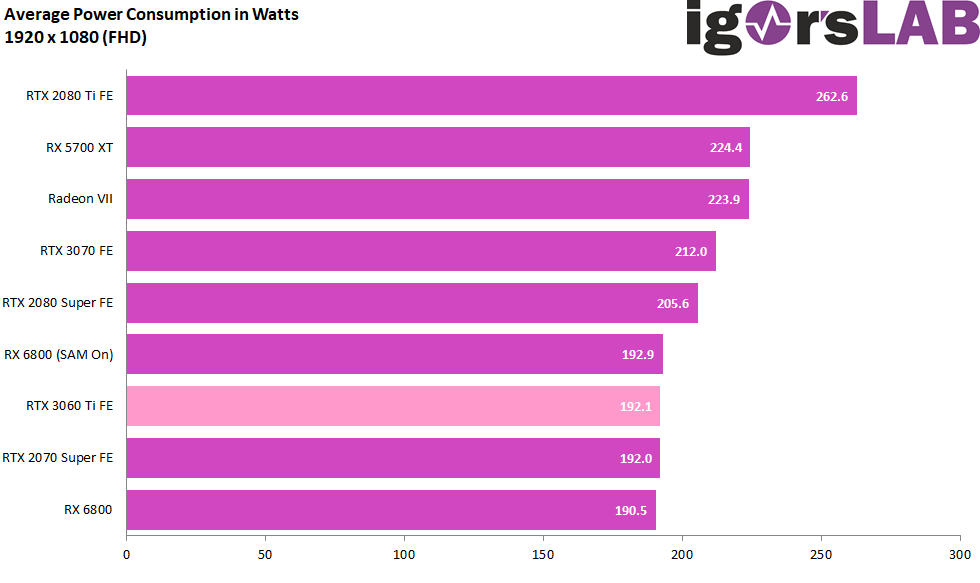
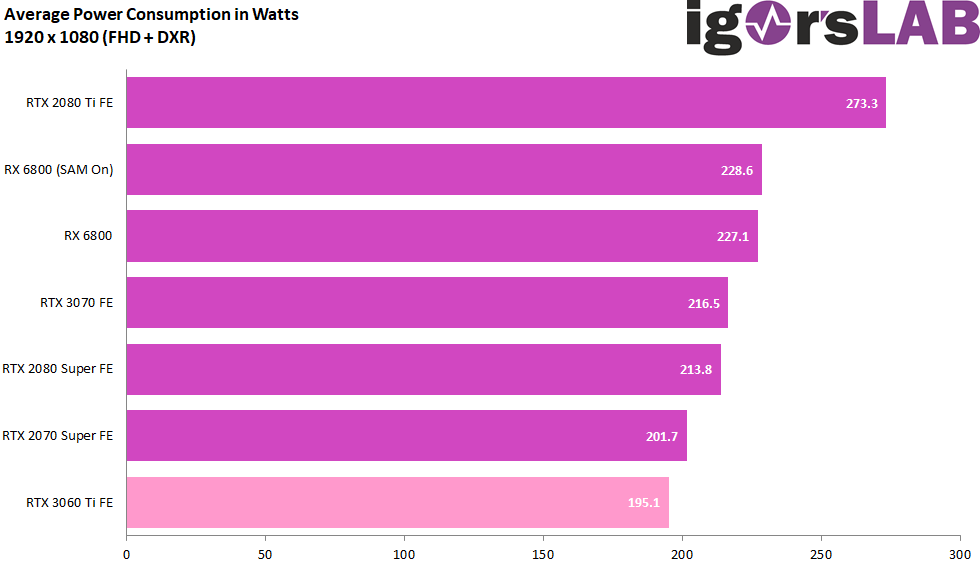
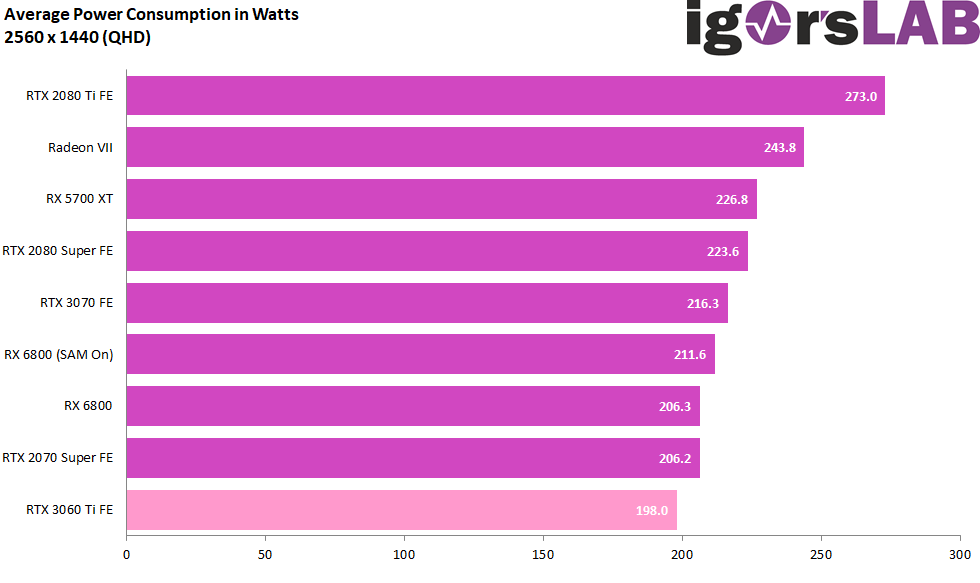

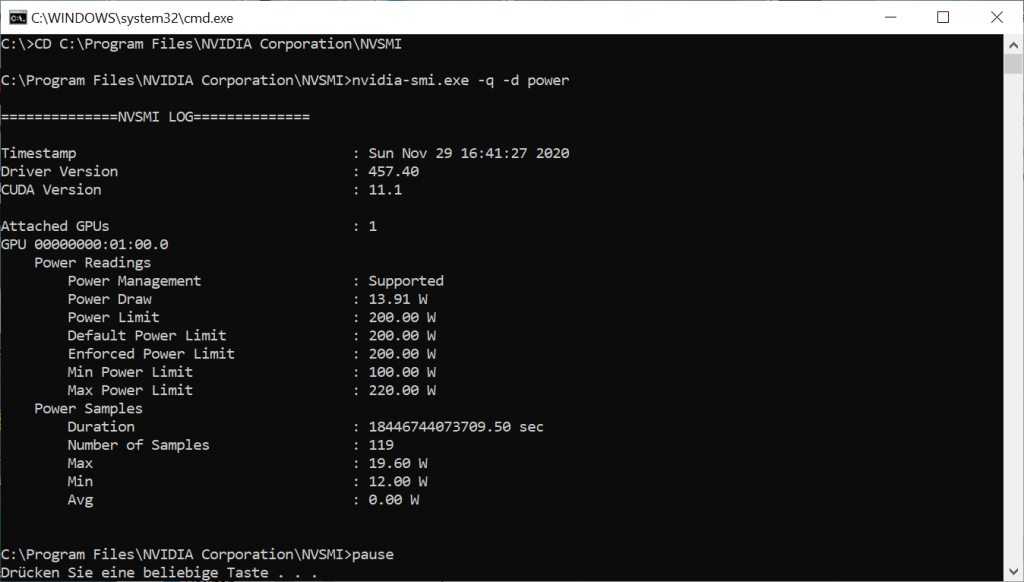
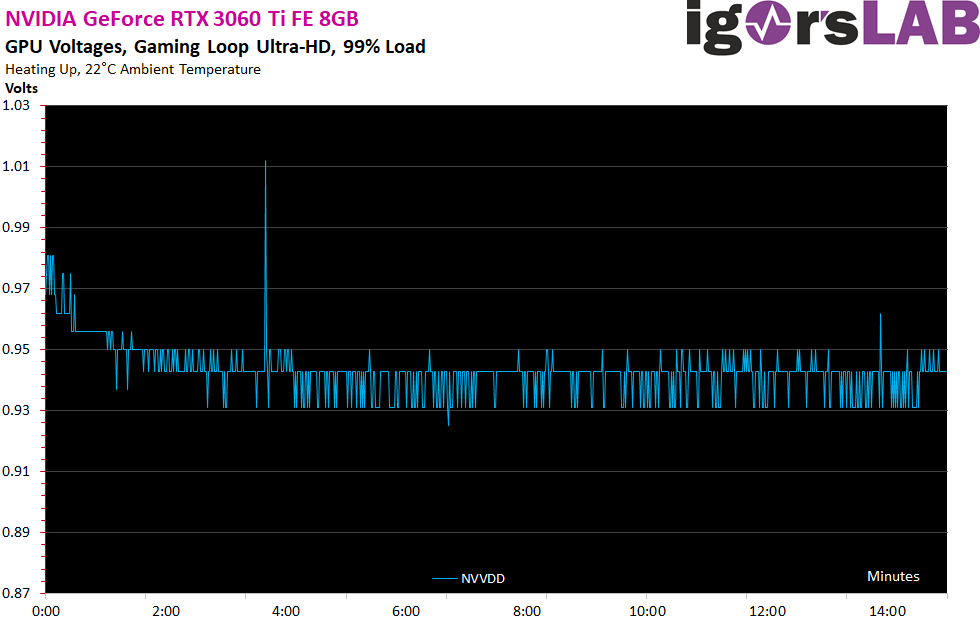
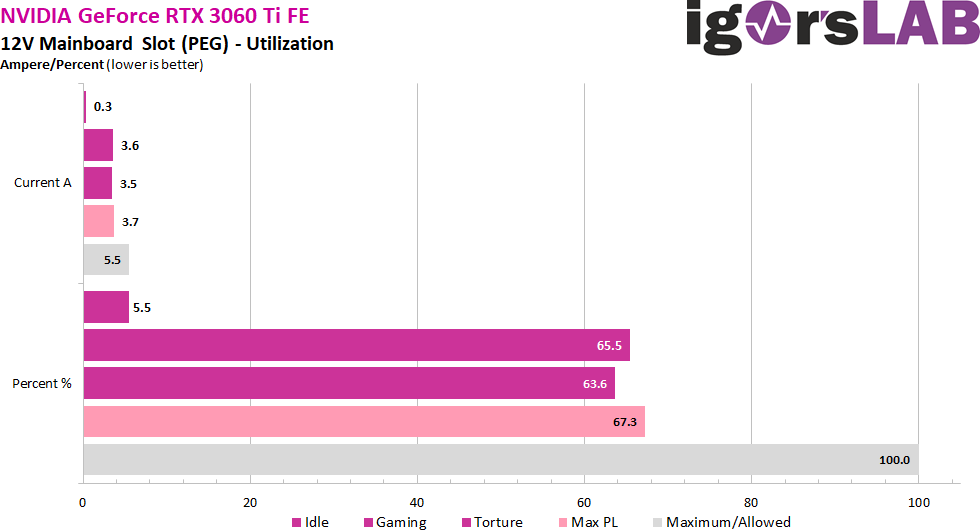
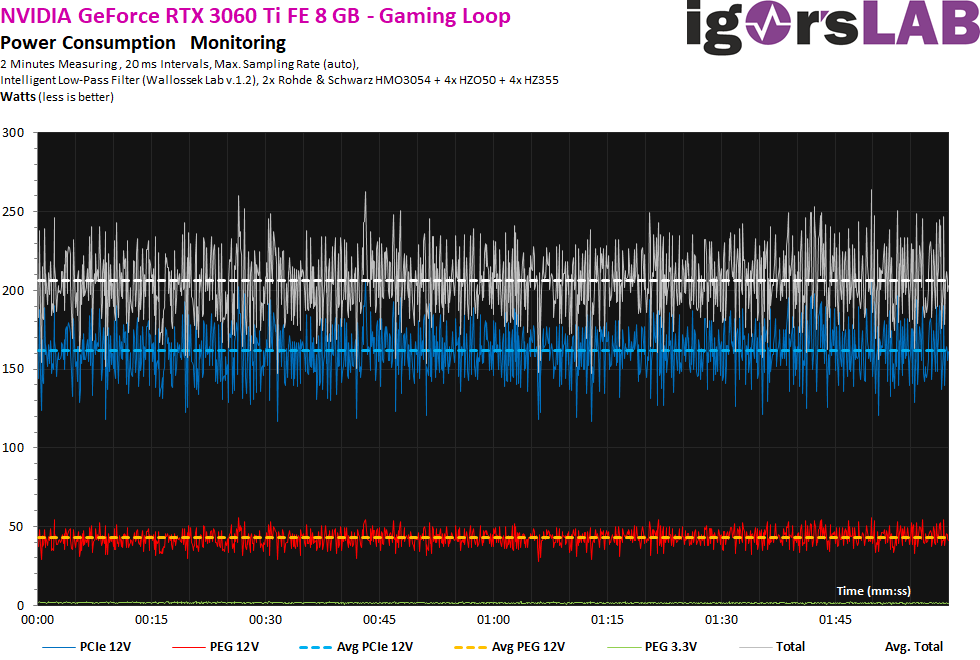
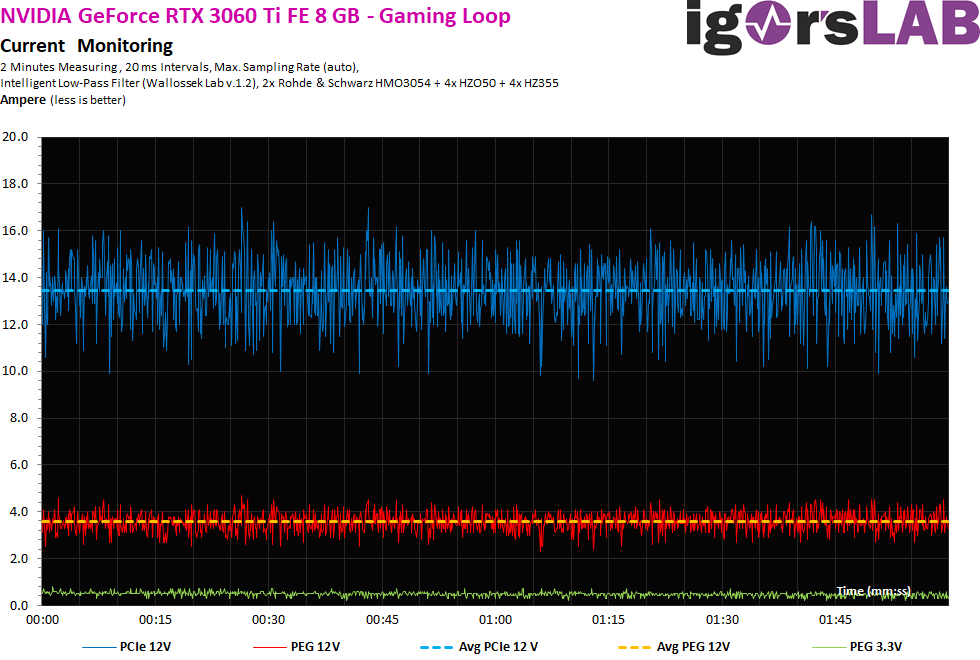
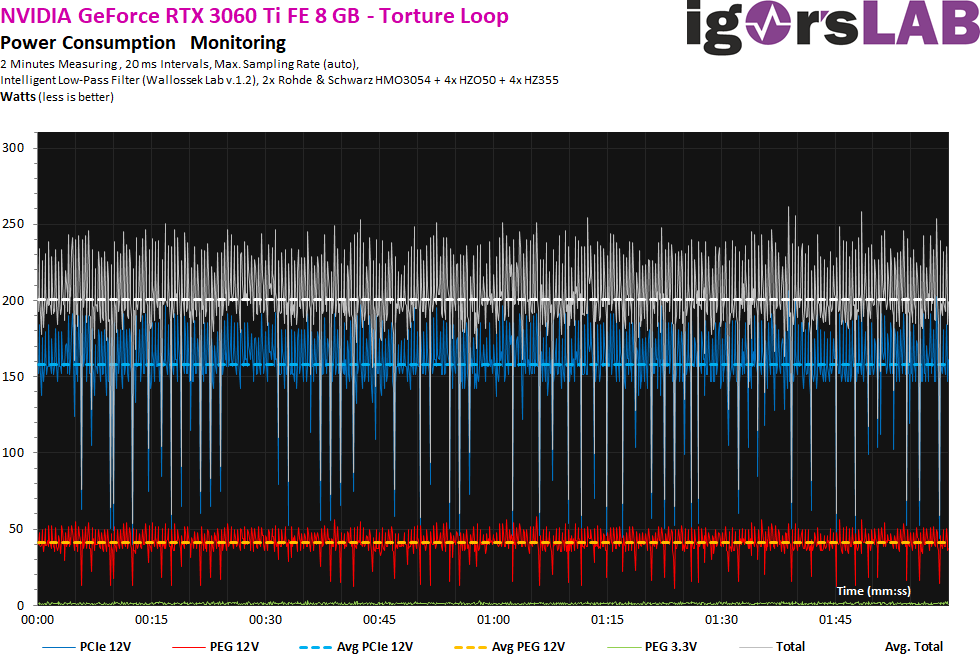
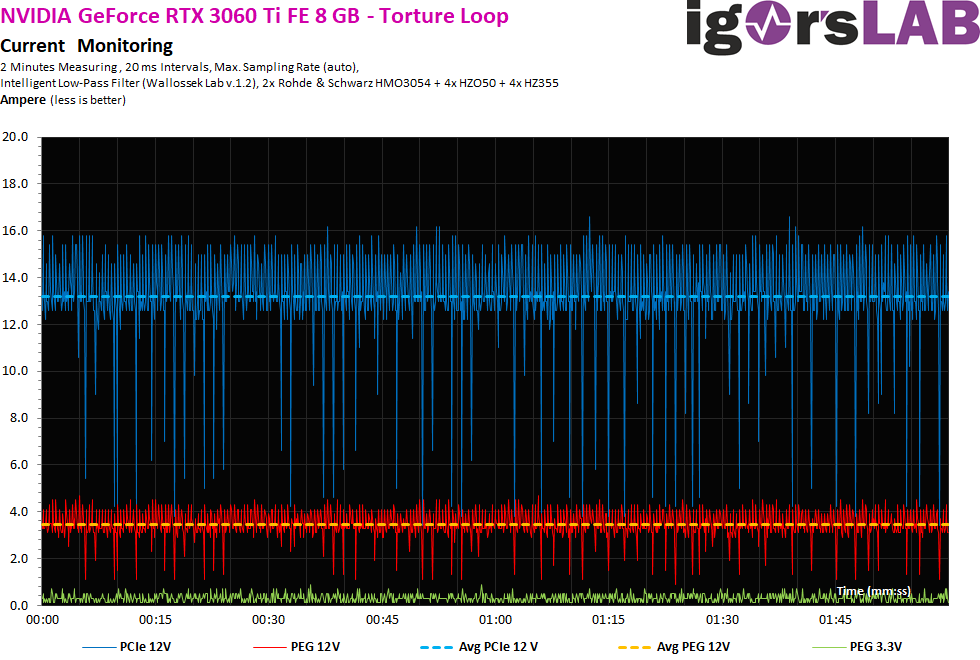
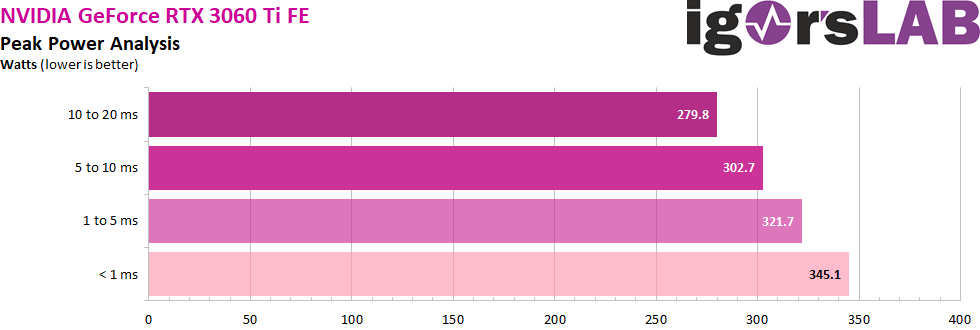


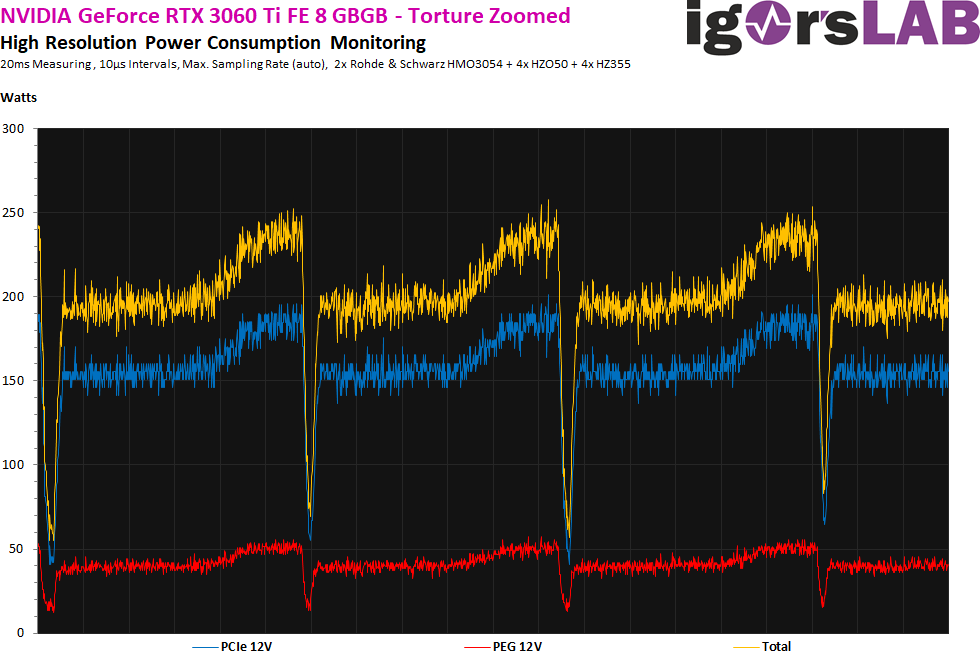
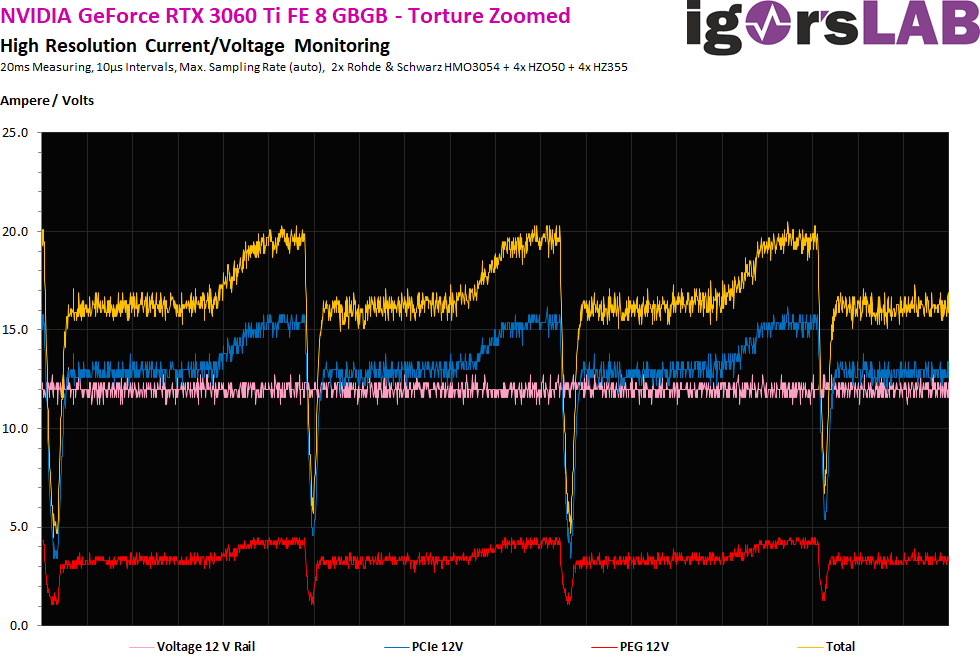

















Kommentieren